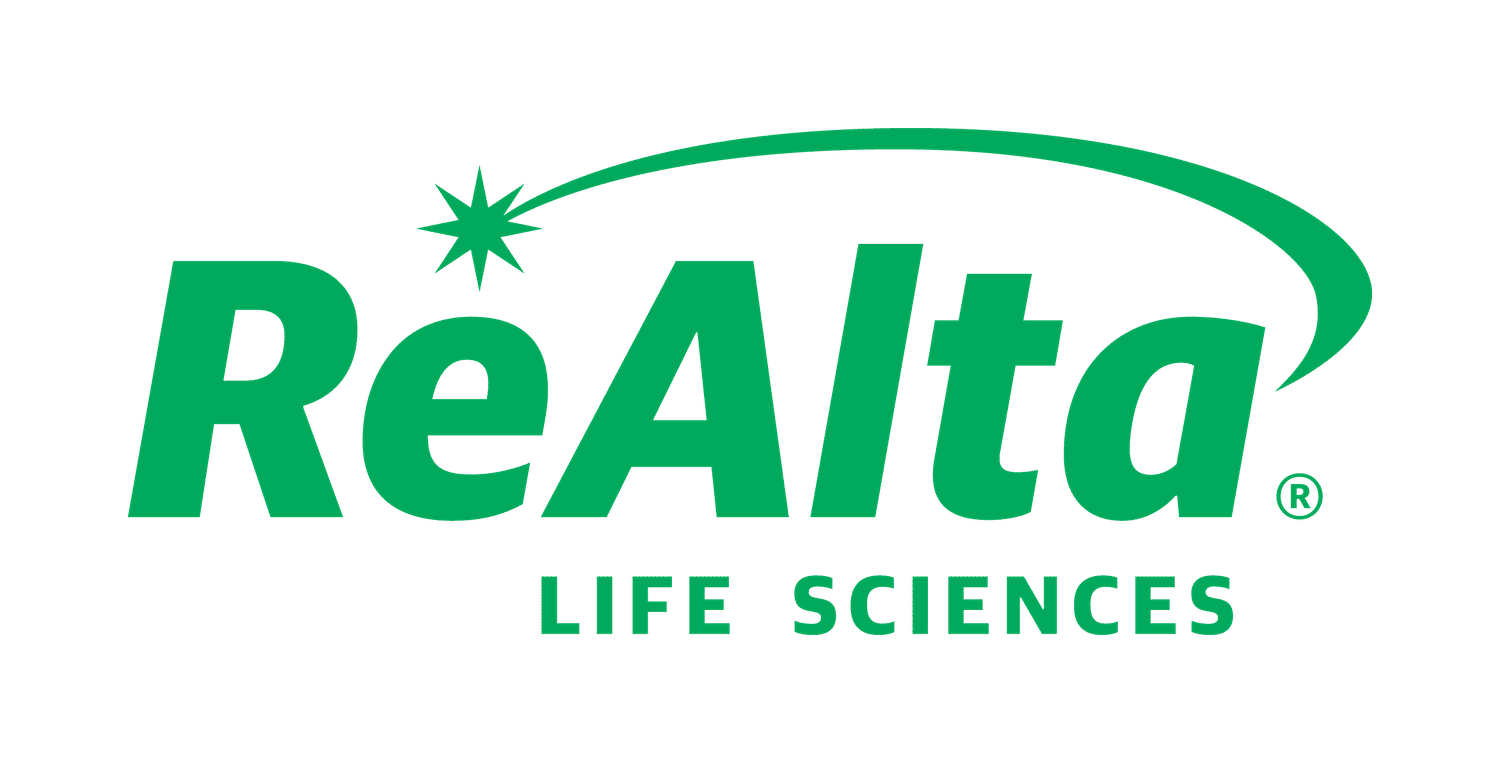预约演示
更新于:2025-05-07
C1R
更新于:2025-05-07
基本信息
别名 C1R、complement C1r、Complement C1r subcomponent + [5] |
简介 C1r B chain is a serine protease that combines with C1q and C1s to form C1, the first component of the classical pathway of the complement system. |
关联
3
项与 C1R 相关的药物作用机制 C1R抑制剂 [+3] |
在研适应症 |
非在研适应症- |
最高研发阶段临床前 |
首次获批国家/地区- |
首次获批日期1800-01-20 |
作用机制 C1R抑制剂 [+1] |
在研机构- |
在研适应症- |
非在研适应症 |
最高研发阶段无进展 |
首次获批国家/地区- |
首次获批日期1800-01-20 |
100 项与 C1R 相关的临床结果
登录后查看更多信息
100 项与 C1R 相关的转化医学
登录后查看更多信息
0 项与 C1R 相关的专利(医药)
登录后查看更多信息
892
项与 C1R 相关的文献(医药)2025-06-01·Journal of Affective Disorders
Novel drug targets for delirium based on genetic causality
Article
作者: Xia, Tianjiao ; Gu, Xiaoping ; Bo, Jinhua ; Zhu, Shouqiang ; Ding, Xiahao
2025-05-01·Hypertension
Persistence of a Proteomic Signature After a Hypertensive Disorder of Pregnancy
Article
作者: Plummer, Xi Du ; Melbye, Mads ; Winn, Virginia D. ; Boyd, Heather A. ; Shu, Chi-Hung ; Sedan, Oshra ; Wong, Ronald J. ; Stevenson, David K. ; Hlatky, Mark A. ; Aghaeepour, Nima ; Shaw, Gary M. ; Stefanick, Marcia L.
2025-04-01·Molecular & Cellular Proteomics
diaPASEF Analysis for HLA-I Peptides Enables Quantification of Common Cancer Neoantigens
Article
作者: Leskoske, Kristin ; Gurung, Hem R ; Zhou, Zhenru ; Klaeger, Susan ; Rose, Christopher M ; Oliinyk, Denys
6
项与 C1R 相关的新闻(医药)2024-09-22
小编将每日更新《Introduction to Antibody Engineering》这一本书的一个章节。
第一章为编者介绍,因此不做概述,我们从第二章节开始学习。
摘要:这是关于免疫系统中的抗体分子是如何被发现的故事。免疫学的早期起源是现象学的,宣扬瘴气理论来解释感染和疾病的起源,即使面对疫苗可以作为保护性治疗的证据。直到二十世纪初,才开始将抗体作为独立实体进行识别。即便如此,化学教条学派对蛋白质本质的束缚阻碍了对抗体真正本质的理解,直到二十世纪下半叶,蛋白质结构的多肽性质和DNA作为遗传物质的角色被揭示,抗体才被展示为动态的分子实体。您将了解到,1960年代和1970年代物理方法的发展如何推动了我们对抗体在溶液中行为的理解,以及X射线晶体学在解释抗原识别的结构基础方面的作用。1980年代和1990年代由于蛋白质工程技术和更复杂的分子生物学方法的引入而加速发展,迎来了基于抗体的治疗的新时代。
1.引言
抗体的历史可以划分为几个物理和时间阶段。十八和十九世纪的早期发现更多是对直接接种低剂量的病原体(细菌、病毒)所观察到的保护效果的观察,后来也尝试使用原始疫苗来治疗或预防疾病(例如,詹纳的牛痘)。这些观察到的保护或治疗效果将由抗体反应与T细胞反应共同介导,但当时的解释更多是现象学的,而不是机械的,因为对蛋白质分子和保护性免疫细胞的知识远远超出了当时的科学范畴。随着二十世纪初蛋白质化学的开始揭开,抗体作为大分子的更具体形式开始被识别,尽管它们的组成以及它们发挥保护效果的方式被理解得很差。随着对蛋白质的理解开始出现,新的蛋白质表征技术在1920-1940年代变得可用,抗体的大小、粗略形状、识别和中和属性开始被定义,以及不同抗体类型或“类别”之间的区别。在这个时候,抗体-抗原相互作用的详细结构基础也开始被提出,尽管即使是当时最杰出的科学领袖有时也会在寻找机制的过程中误入歧途,例如,解释相似的抗体结构如何能够识别众多不同的外来抗原。到了二十世纪中叶,清晰度开始出现,导致了1970年代初对抗体结构的理解,并在1980年代通过B淋巴细胞中抗体是如何从多个基因片段组装而成的遗传蓝图的揭示而达到高潮。这些遗传突破导致了对免疫系统如何产生多样化的抗体结构库的解释。现在我们将更详细地探索这些时间段。
2.早期开始
爱德华·詹纳,被誉为疫苗接种(针对天花)的发现者,于1749年5月17日出生于英格兰格洛斯特郡的伯克利村。他在一个小英格兰村庄(奇平索德伯里)的外科医生兼药剂师丹尼尔·拉德洛手下学习外科,后来又在乡村外科医生乔治·哈德维克手下学习。然后他在伦敦的圣乔治医院在著名的“科学外科医生”约翰·亨特手下工作。1772年,詹纳回到家乡伯克利,成为当地社区的从业者和外科医生。他当时只有23岁,但已经积累了9年的解剖和调查知识,对于如此年轻的人来说,这是非凡的博学。詹纳对天花病的兴趣可能在他早期与拉德洛和哈德维克的学徒期间被激发,据说(并非每个人都同意)他遇到了乳品女工的民间传说“如果我暴露于并屈服于牛痘,我将永远不会得天花。”一首著名的十七世纪儿歌,加上一些诗意的解释,可能支持了这一民间传说,即暴露于牛痘的乳品女工从未在他们的脸上留下天花疤痕,“你要去哪里,我漂亮的女仆?我要去挤奶,先生,她说...你的命运是什么,我漂亮的女仆?我的脸就是我的命运,先生,她说。”
在十八世纪,天花每年在欧洲夺走约40万人的生命。在幸存者中,有三分之一的人失明。接种(拉丁语varius = 斑点或染色),即将活天花疮液注入个体的皮下作为一种保护程序,已经为人们所知几百年了。然而,它在欧洲的采用只有在一系列程序最初在英国贵族成员身上进行,然后在伦敦纽盖特监狱的囚犯和后来的孤儿身上进行了更受控制的一系列试验之后才开始,这两种情况都取得了一些适度的成功。
詹纳有不同的方法。他报告了23个案例研究,涉及个体或个体群体,他们(1)自然暴露于牛痘然后是天花,(2)自然暴露于牛痘然后接种,以及(3)没有经历过任何感染,然后接种牛痘接着是天花。第一个案例研究似乎发生在1743年,但其中最著名的是伯克利附近农场的乳品女工莎拉·内尔姆斯的案例。作为案例XVI,詹纳观察到:莎拉·内尔姆斯,一个农民的乳品女工,在1796年5月从她主人的牛身上感染了牛痘。她在手的一部分感染了...由于疾病的后果,产生了一个大的脓疱疮和通常伴随疾病的症状......
这里是测试假设暴露于牛痘保护个体免受更危险的天花的机会。詹纳找到了一个还没有接种过的年轻村童,詹姆斯·菲普斯,并将莎拉·内尔姆斯疮液注入菲普斯的皮肤下作为两个大约半英寸长的浅表切口。这是在1796年5月,是人类对人接种(源自拉丁语vacca = 牛)的第一个例子。两个月后,詹纳通过通常的程序对菲普斯进行了天花接种,令人惊讶的是,天花暴露没有引起感染。詹纳试图让伦敦皇家学会发表他的结果失败了,因为“缺乏足够的实验证据”。他确信这是一个极其重要的医学进步,导致他自费出版。然而,这还不足以说服整个医学界。怀疑无处不在,直到几位著名的伦敦医生支持詹纳的程序。虽然许多国家认识到詹纳接种程序的力量,包括拿破仑,他要求他的军队接种疫苗,以及在美国的前瞻性医生,在包括英国在内的欧洲部分地区,怀疑很普遍,直到十九世纪末,英国医学界才最终认识到牛痘接种的力量。许多医生不愿采用疫苗的原因之一是他们对瘴气(希腊语miasmatos;拉丁语miasma = 有害蒸汽)理论的几乎狂热的坚持,认为坏空气和其他环境影响被认为是疾病的起源。
詹纳或任何医学界都不理解牛痘疫苗的有效性,因为保护性免疫“系统”在体内的观念远远超出了当时的医学知识体系。这种情况变化得非常缓慢,并且不是没有来自所有科学界的相当怀疑。1860年,巴斯德在法国里尔和巴黎首先提出了他的“细菌理论”,最初是为了解释特定的生物体(酵母)在发酵过程中对酒精的必要性,也负责酸化(细菌)。这些关键的观察导致了疾病的细菌理论。由于科学界强烈坚持“自然发生”或在发酵的情况下“自然转变”的观念,这些理论在几十年后都没有被完全接受。随着罗伯特·科赫在柏林的平行研究,传染病的微生物起源开始建立,尽管“化学思想流派”继续持怀疑态度,认为所有疾病都是由于身体内部或外部影响造成的化学失衡。
发现一种灭活或“减毒”的病原体(例如,通过化学处理或氧化)能够保护机体免受该病原体的致病版本感染,这将是对抗瘴气理论和纯粹化学感染理论的致命一击。这一发现的第一个实际演示发生在法国的Pouilly-le-Fort,1881年,兽医Rossignol挑战巴斯德公开证明他的疫苗接种方法,通过预防绵羊炭疽感染(见图1)。
图1 1881年的普伊-勒-福尔疫苗接种。
这次实验完全成功,并验证了减毒方法对许多其他传染病的有效性。但这是在动物身上进行的,尽管给人印象深刻,但尚未在人类身上进行。实际上,自从詹纳以来,还没有尝试过人类疫苗接种,尽管巴斯德声称Pouilly-le-Fort是“实验性疫苗”的第一次演示,而不是简单地从感染牛痘的“水泡”中取出的接种物。四年后,巴斯德通过一个今天绝不会被允许的实验来纠正这一记录,这次是针对狂犬病的。
1885年7月6日,三名被狂犬病狗咬伤的人出现在巴斯德在巴黎的实验室。其中最年轻的,一个9岁的男孩,约瑟夫·迈斯特,被认为是最危险的。巴斯德一直在兔子身上研究狂犬病,知道它攻击神经系统。通过将感染兔子的脊髓暴露在空气中1到15天,他的实验表明狂犬病病毒逐渐减毒,直到不再具有传染性。他在男孩的上腹部植入了10天的兔子脊髓材料,从最长的15天暴露开始,逐渐减少到更具毒性的1天暴露。迈斯特在这一过程中幸存下来,三个月后,巴斯德在法国科学院以极大的兴奋向人们展示了这个案例。
在这个时候,医学科学知道了“什么”,但他们并不理解“如何”。疫苗是如何引起保护的,以及在体内发生了什么导致了这种保护?这种情况即将改变,但并非没有遇到许多波折。
3.血清作为保护矩阵
在19世纪80年代末的罗伯特·科赫柏林研究所,埃米尔·冯·贝林和来访的日本研究员北里柴三郎一直在研究破伤风杆菌的减毒,试图找到一种疫苗。他们用碘仿(CHI3,一种氧化剂)处理了杆菌,称之为“消毒剂”制剂,然后用处理过的杆菌给兔子接种。当这些动物面临破伤风的有毒形式时,它们得到了完全的保护。冯·贝林相信血液不知何故发生了变化,他和北里柴三郎一起从先前暴露的兔子身上取血清,注射到小鼠体内,小鼠对未经处理的破伤风杆菌挑战完全免疫。来自巴黎巴斯德研究所的埃米尔·鲁和在柏林的北里柴三郎通过特殊陶瓷过滤器(例如,钱伯兰)过滤,能够分别从白喉和破伤风杆菌中分离出有毒实体,这些过滤器具有微小的天然孔隙,可以阻止细菌和其他微生物的通过,但允许分子聚合体通过。北里柴三郎与冯·贝林一起表明,当免疫兔血清与破伤风毒素预先孵化,并将混合物注射到小鼠体内,或者小鼠在接受毒素挑战后接受抗血清,它们再次得到了完全的保护。在这些观察的基础上,冯·贝林的主要兴趣是白喉,他用过滤过的白喉毒素重复了程序,并获得了相同的结果。这些是“预防性血清疗法”的第一批例子,冯·贝林认为血清起到了“抗毒素”的作用。由于白喉在德国(和欧洲其他地区)比破伤风更重要,它很快成为一种商业驱动的、非常成功的临床治疗,使用马来生产大量的抗白喉毒素抗血清。1901年,冯·贝林因他的白喉抗血清发现获得了诺贝尔奖(见图2)。
图2. 埃米尔·冯·贝林。
在科赫实验室工作的还有保罗·埃尔利希,他一直在研究化学氧化还原染料作为细胞氧状态的传感器。在Hoechst公司生产白喉毒素批次的过程中,用于产生马抗血清,埃尔利希被要求解决批次间效力变化的问题,特别是在储存期间。他发现毒素似乎包含几个组分,有毒的毒素本身和各种衍生物(他称之为类毒素),它们保留了与血清抗毒素组分的结合,但随着时间的推移失去了它们的毒性。他著名的礼物谱,反映了各种类毒素的不同测量亲和力,显示了逐步结合,他将其解释为类毒素和抗毒素之间不可逆的共价键合,这一结论与他早期的观点一致,即氧物种与他的氧化还原染料的结合也是不可逆的。所以,抗毒素(抗体)与它们的目标的结合是共价的!
同时,在哥本哈根的索瓦尔德·马德森和在乌普萨拉的斯万特·阿伦尼乌斯进行了类似的破伤风毒素研究,他们的结果质疑了埃尔利希的共价键合假设。他们的结果与奥斯陆的古尔德贝格和瓦格的可逆平衡结合模型一致,因为结合曲线是连续的,而不是阶梯曲线。尽管有这个新证据,即使是伟大的物理化学家沃尔特·能斯特在1904年评论说,可逆过程的概念与事实相冲突。有时伟大的化学家并不总是伟大的生物学家!
在继续发展他的抗毒素-毒素相互作用理论的同时,埃尔利希的思想受到了19世纪早期对蛋白质相当原始的理解的强烈影响,它们是什么化学物质,以及它们在体内的什么作用。引起感染的毒素、病毒或细菌的概念围绕着这样一种想法,即病原体进入体内时是有毒的,因为它们通过与各种组织细胞表面的“营养受体”发生交叉反应(基本上是竞争)来隔离身体必需的营养物质。细胞对这种挑战的反应是过度产生作为可溶性实体的受体,这些受体是结合相关毒素和类毒素的抗毒素。根据这一理论,如果由于毒素过载,营养物质对组织和器官的供应急剧减少,身体可能会患上严重的疾病甚至死亡。
埃尔利希的抗毒素过程模型在他1900年3月22日对伦敦皇家学会的克罗尼安讲座中得到了说明(见图3)。
图3. 埃尔利希对毒素分子与其“细胞原生质”(抗毒素)的侧链通过它们的“结合亲和团”结合的表示。经伦敦皇家学会许可,转载自埃尔利希,P.,《论免疫与细胞生活特别相关的主题》,皇家学会Croonian讲座1900年,发表于《皇家学会学报》1900年,第66卷,第424-448页,版权所有 # 皇家学会。
尽管他的生物学理论有些偏离中心,但与B细胞受到抗原刺激产生可溶性抗体的类比,不知怎的,并不遥远。但Ehrlich的模型还需要解释抗毒素的另一个特性。已知抗毒素能够介导凝集和/或溶血(例如,红细胞),而他最初的侧链假设在解释这一点上遇到了困难。Ehrlich随后“扩展”了他的模型,将诱导溶解的成分作为每个抗毒素的一个组成部分。他将这种复合物称为“amboreceptor”(图4),它作为一种双重识别抗毒素——抗毒素本身和Ehrlich命名为“补体”的溶解实体——起作用。
图4 埃尔利希的“amboreceptor”概念,其中抗毒素同时与细胞侧链和“补体”分子结合。经伦敦皇家学会许可,转载自埃尔利希,P.,《论免疫与细胞生活特别相关的主题》,皇家学会Croonian讲座1900年,发表于《皇家学会学报》1900年,第66卷,第424-448页,版权所有 # 皇家学会。
虽然这个想法很有创意,但它面临着一个重大的经济问题。由于每个amboreceptor都需要针对特定的抗原,因此每种不同的抗毒素也需要不同的补体实体。这个想法很有创意,但在生物学上极其浪费。
与此同时,比利时免疫学家Jules Bordet提出了另一种解决溶血问题的方案。他也假设存在一种溶解性物质(他称之为“alexine”),它作为血液中的一个独立实体。当细胞(例如,红细胞)通过毒素附着在细胞表面的抗毒素上而被处理时,细胞会以某种方式变得敏感,然后alexine会直接溶解细胞。然而,在Bordet的模型中,alexine与抗体之间并没有直接的相互作用。两个错误通常不会变成正确,但将Ehrlich和Bordet的方法结合起来(当时他们对彼此的想法非常反对),这个机制在原则上至少接近于补体系统的工作方式。
4.特异性和蛋白质的本质
对于埃尔利希、博尔代和其他科学家来说,如果他们知道蛋白质是由长链氨基酸组成的,并且折叠成依赖于氨基酸序列的三维形状,那将会简单得多。然而,他们并不知道这一点。事实上,围绕欧洲的强大化学游说团体,特别是在维也纳,他们认为蛋白质是“胶体”,由小分子混合物组成,这些小分子通过基本表面电荷的介导结合在一起。伟大的化学家埃米尔·费舍尔在1906年宣称,天然蛋白质是肽类物质的混合物,其组成比之前认为的要简单得多。一年后,他指出,没有丝毫保证说天然蛋白质是均质物质。
另一个让埃尔利希等人深思的问题是特异性问题。在维也纳工作的弗里德里希·奥伯迈耶和恩斯特·彼得·皮克在1906年表明,如果一个抗原(例如,牛血清白蛋白)通过各种化学处理(例如,碘化)进行修饰,然后用于免疫兔子,产生的血清只与修饰后的白蛋白反应,而不是与天然蛋白质(当时仍被认为是胶体)反应。这可以说是对抗毒素的“化学特异性”最早的展示。他们进一步表明,兔子血清与任何物种(包括植物)的碘化白蛋白反应,但不与这些物种的天然白蛋白或用另一种化学修饰修饰的白蛋白反应。他们的结论,尽管后来被证明过于简化,是修饰破坏了白蛋白物种特异性。这将需要维也纳医生卡尔·兰德斯坦纳的坚韧工作,他从在维尔茨堡与埃米尔·费舍尔、维也纳的马克斯·冯·格鲁伯等人共事时期获得了显著的化学知识,来解释发生了什么。兰德斯坦纳可能受到皮克1912年对该主题的巨著评论的影响,通过对实验细节的细致关注和聪明的头脑,他对特异性有了更清晰的认识。从1912年到他1930年获得诺贝尔奖之后的很长一段时间里,兰德斯坦纳解决了当时教条的基本问题,即蛋白质是唯一可以作为抗原的物种。那么,像皮克所建议的简单化学修饰如何能绕过这一要求呢?通过使用化学温和的方法产生引入“半抗原”(蛋白质的小分子修饰剂)的修饰蛋白质,兰德斯坦纳表明,对半抗原的识别可以与对天然蛋白质的识别分开,两者都可以作为识别元素。这对埃尔利希的“毒素与预先存在的抗毒素(营养受体)交叉反应”理论是一个打击,因为兰德斯坦纳引入的许多修饰在免疫动物中从未出现过,那么它们怎么可能有如此多样的特定、预先存在的抗毒素呢!
Landsteiner最重要的发现是他扩展了Ehrlich和Morgenroth的观察,他们表明针对近缘种红血球的凝集抗血清可以根据抗血清滴度和吸附实验来区分。Landsteiner的问题是:是否可以在个体内部区分红细胞抗原?早在1901年,他就表明,来自同一物种另一动物的正常血清可以凝集同一物种另一动物的红细胞。此外,他还表明,注射红细胞可以产生区分同一物种成员的凝集抗血清。这一化学基础花了十年时间才弄清楚,但从这些精心执行的凝集实验中,Landsteiner定义了血型抗原A、B、O和AB。他因这项重要工作于1930年获得诺贝尔奖。在20世纪20年代中期,纽约洛克菲勒研究所(Karl Landsteiner于1922年从欧洲移居洛克菲勒)的Oswald Avery和Michael Heidelberger对肺炎球菌进行了进一步的重要研究,他们提出了抗原种类的另一个重要概念,彻底埋葬了“蛋白质作为唯一抗原”的理论。这些实验的关键结果是,肺炎球菌表面的碳水化合物部分能够在与抗体的沉淀反应中表现为抗原,但需要与蛋白质(例如,红细胞表面)结合,以产生特异性的碳水化合物免疫反应。从这一点开始,蛋白质是唯一抗原种类的观念被证明是错误的。
然而,尽管有这些重大发现,抗毒素(现在更常见的称为抗体)的确切性质仍然不明。正如Landsteiner在他1933年发表的关于他最重要的实验的广泛叙述《血清学反应的特异性》中所指出的,该文于1936年以德语修订,并在他去世后于1945年以英语出版:“……尚未达成关于抗体反应的完整理论……考虑到……负责反应物之一特异性的化学结构——抗体——仍然未知,这并不令人惊讶。”
在蛋白质结构未知的情况下,像Landsteiner这样的伟大生物学家在试图拼凑抗体识别的机制部分时所感受到的挫败感是容易理解的。胶体理论仍然是主导的教条,即使在X射线衍射出现之后,情况仍然模糊不清。20世纪20年代,Rudolph Brill在柏林研究纤维蛋白——丝素的结构。已知丝素主要由甘氨酸和丙氨酸氨基酸组成。1923年,Brill报告称,丝素晶体的单元格(分子重复单元)由四个平行的甘氨酸-丙氨酸二肽单元组成。由于认为一个分子不能比单元格的内容更大,Brill无法区分由Gly-Ala重复单元组成的聚合物和非共价聚集的二酮哌嗪单元之间的区别,实际上是一种胶体。
即使有来自Theodor Svedberg新发现的超离心机的结果,他在瑞典乌普萨拉工作,胶体学派的触角也影响了对蛋白质结构的解释。在1926年的诺贝尔奖演讲中,Svedberg描述了研究表明血红蛋白的分子量约为69,000道尔顿,而卵清蛋白约为34,000道尔顿。这些质量数是在有盐(NaCl)和无盐的情况下获得的,至少证明了蛋白质胶体结构依赖于盐的存在的假设是错误的。尽管驳斥了盐是将胶体元素结合在一起的必要条件,Svedberg除了评论蛋白质在表现出极其狭窄的粒径分布方面是均质的之外,没有进一步评论它们的化学性质。在1937年对许多不同蛋白质进行了进一步的超离心实验之后,包括其他实验室对“血清球蛋白”(抗体的集体名称,质量约为150,000道尔顿)的结果,Svedberg的结论仍然受到胶体理论的影响:“……总体上只有非常有限的质量数似乎是可能的。蛋白质分子可能是通过明确单元的连续聚集构建起来的,但只有少数聚集体是稳定的……”
5.蛋白质结构理论
在20世纪30年代,提出了各种蛋白质结构模型,包括Frank和Wrinche的环状模型,Bergmann和Niemann的重复氨基酸单元模型,以及其他更奇特的模型。1939年4月,Linus Pauling和Carl Niemann,后者现在在加州理工学院与Pauling合作,在他们的论文《蛋白质的结构》中毫不客气地抛弃了蛋白质结构的胶体理论。在第一段中,他们指出:
我们认为,蛋白质的多肽链结构,以及氢键和其他原子间力……在多肽链、链的部分和侧链之间起作用,不仅与蛋白质的化学和物理性质相容,而且与关于分子结构的详细信息总体上……
这是对蛋白质结构理解的一个重要进展。在撰写这篇引言时,作者感谢了Emil Fischer,他几十年前曾提出蛋白质可能存在多肽链结构,尽管最终倾向于胶体粒子理论。奇怪的是,Pauling和Niemann没有承认中国科学家Hsien Wu的卓越洞察力,他在哈佛和麻省理工学院接受教育,然后在北平(现在的北京)工作,谁在1929年不仅提出了蛋白质的链理论,还提出这样的链折叠成三维紧凑结构。
凭借多肽链理论和其他实验数据,Pauling着手解决抗体识别问题。1937年,Heidelberger和Pedersen对血清球蛋白部分的实验工作表明,使用超离心机,免疫和非免疫的兔子和马血清球蛋白的分子量大约相同,为160,000道尔顿。Elvin Kabat访问乌普萨拉,使用Tiselius最近开发的新电泳方法分析血清球蛋白部分,并通过对免疫和非免疫血清进行超离心研究,表明两个部分的质量分别为160,000(“γ带”)和900,000(“重带”——后来命名为IgM)。更有趣的观察是,在免疫血清中,与非免疫血清相比,γ带的强度增加了。
也许是关键实验的是,与抗原吸附后的部分,γ带的强度降低了。
Pauling汇集了所有可用的已发布信息,在1940年发表了他的抗体结构理论以及它如何解释抗原识别。这一理论的关键要素是:
• 抗体具有与抗原的互补性,并通过“强”力结合在一起。
• 抗体的分子量约为160,000,可能来源于血清的γ部分。
• “双价性”足以解释沉淀反应期间形成的所有复合物。
• 所有抗体在组成上是相同的。
尽管Pauling在分子洞察方面表现出色,但为了解释抗体如何识别许多不同的抗原,他不得不接受这些特性中的最后一项。然后,他需要发展一个模型,解释单一抗体组成如何识别众多抗原。他的模型如图5所示。
图5 鲍林的图表展示了抗体形成过程的四个阶段(图的左侧)以及抗体-抗原复合物形成过程的六个阶段。右下角的卡通图显示了一个抗原分子被结合的抗体分子或分子部分包围,从而阻止了进一步的抗体形成。
Pauling将这个模型称为他的“指导模型”。它要求相同的多肽链序列在抗原的指导下折叠成不同的构象。为了实现这一点,他假设在抗体链的末端有富含甘氨酸的灵活区域,这些区域会以不同的方式围绕每个抗原折叠,形成特定的抗体-抗原复合物。因此,非免疫球蛋白与免疫球蛋白没有区别,除非抗原被结合。另一个后果是,由于每个抗体都是双价的,理论上每个识别“臂”都可以结合不同的抗原。虽然一些数据支持这一观点,但Landsteiner和Scheer在1938年表明,当同时针对两种不同的抗原产生抗体,然后去除单一半抗原特异性抗体时,没有证据表明任何剩余的抗体能够结合两种不同的半抗原。Pauling迅速承认存在矛盾的数据,并以光荣的科学方式回应:“……在Landsteiner博士的友好合作下,我们正在继续这项调查……”。
虽然Pauling的模型解释了如何使用特定的非共价键结合来适应多样的抗原,并为沉淀和凝集提供了一个可接受的模型,但它有两个(至少)关键弱点。它无法解释“抗原指导”的抗体在抗原消失后如何在循环中持续存在,也无法解释在抗原的二次挑战后抗体亲和力如何增加。这些是具有高度影响力的细胞免疫学家Frank Macfarlane Burnet在1941年出版的有影响力的专著《抗体的产生》中所指出的基本问题。
抗体多样性的产生是如何被当代遗传教条所困扰的,其中蛋白质被认为是基因。直到1944年Avery、MacLeod和McCarthy对肺炎球菌进行的具有里程碑意义的实验,DNA才从“有趣但不是特别重要”的材料类别中脱颖而出,成为“转化原则”:至少在当时对一些有洞察力的科学家来说是如此,但仍然被“蛋白质是基因”学派热烈辩论。即使是Avery和他的同事在他们的结论中也很谨慎,他们指出他们观察到的转化可能是由制备中的“其他物质”引起的。著名的洛克菲勒分子生物学家Alfred Mirsky在大约三年后的冷泉港研讨会上评论说:
在目前的知识状态下,声称将细菌类型转化的特定因子是脱氧核糖核酸,将超出实验事实的范围。
Mirsky所建议的是,需要更多的实验证据来确定蛋白质还是核酸是遗传物质。这将在1952年Hershey和Chase的经典实验中到来,其中对蛋白质和核酸(分别为S35和P32)进行差异性放射性标记,证明DNA是T2噬菌体的复制元素。到了1950年代中期,任何对DNA作为转化原则的怀疑都消失了。
6.抗体序列:均质还是异质?
要解开抗体一级结构和识别之谜,需要我们所谓的“抗体星系”的共同努力,包括剑桥Fred Sanger实验室以及后来在伦敦国家医学研究所(NIMR)和伦敦圣玛丽医院医学院的Rodney Porter,纽约洛克菲勒研究所的Gerald Edelman,哈佛大学的Edgar Haber,以及杜克大学的Charles Tanford,但在此过程中也不乏死胡同。Porter于1948年在Sanger实验室开始对非免疫和免疫(抗卵清蛋白)兔球蛋白的研究。在纯化球蛋白部分和N末端测序(Sanger的Edman方法在胰岛素上开发)后,他发现非免疫和免疫球蛋白的氨基末端残基没有差异。事实上,所有球蛋白的前五个氨基酸序列(Ala-Leu-Val-Asp-Glu?)都相同,二硫键的还原对卵清蛋白结合没有影响。这是第一个死胡同。由于他不知道兔重链有一个封闭的N末端,因此不会显现出来,他无意中只对轻链的N末端进行了测序。由于他知道球蛋白的质量为150,000道尔顿,他错误地得出结论,抗体是一个由大约1500个氨基酸组成的单一连续链。这样的结果与Pauling的单一均质序列模型一致,Porter认为他的结果(发表于1950年)支持了这一理论。反正也没有其他模型,正如Sanger在1952年所指出的,在他获得第一个化学诺贝尔奖的6年前:
目前,根据现有的少量实验证据,不可能形成任何关于蛋白质结构的一般理论,也不可能形成控制蛋白质中氨基酸排列的原则……
在NIMR学习了色谱学的先进方法后,Porter和John Humphrey使用不同的抗原表明,免疫γ-球蛋白部分的色谱行为与非免疫γ-球蛋白不同。使用木瓜蛋白酶,Porter发现γ-球蛋白可以被分裂成三个片段(I、II和III),其中只有两个(I和II——现在被称为Fab片段)能够结合抗原,而片段III溶解度较低且容易结晶(Fc片段)。他们在1959年发表了这些结果。然而,他仍然坚持Pauling模型,并被迫引入一些关于片段模式的奇怪解释,以得出两个假定不同的抗原结合臂如何能够连接到单一线性链的非结合区域!将由Gerald Edelman与Miroslav Poulik在洛克菲勒研究所进行的一些相当简单的实验来彻底否定单链球蛋白理论。在他们1961年的论文中,他们展示了当在变性剂存在下加入还原二硫键的化学物质时,γ-球蛋白可以被分离成不同的链。产生的较小片段与单链模型不一致,而且片段(重链和轻链)与Porter的木瓜蛋白酶片段在身份上是正交的。在讨论中,Edelman和Poulik评论道:
...γ-球蛋白分子...由通过二硫键连接的几个多肽链组成。双价抗体可能包含两个在结构上相似或相同的链...可能来自不同链的各种组合以及每种链内氨基酸序列的差异。
与此同时,Porter并没有闲着。在1962年3月纽约哥伦比亚大学的一个特别研讨会上,他提出了一个兔γ-球蛋白的链结构,该结构解释了他和Edelman的结果(见图6),并在1963年全文发表。唯一剩下的假设是他认为抗原结合仅存在于A(重)链中,这一点直到十年后才变得清晰。
图6.兔子γ-球蛋白的四链结构的提议图,根据原始资料重绘。注意那时已经理解的重链的N-末端被封闭([)。
Edelman随后在1964年发表了自己的模型,虽然与Porter的不同,但每个抗体仍然涉及四个链,任何重链都可以与任何其他轻链配对。它的不同之处在于它将抗体显示为一个坚实的“扁平香肠”,重链和轻链相互互动,但没有重链-重链互动。他提出,包含重链和轻链区域的抗原结合区位于香肠的每个末端,抗原特异性由该区域的氨基酸差异定义。
另外两组研究使抗体特异性的问题得到了圆满解决。Edgar Haber在1964年证明,经过γ-球蛋白链的二硫键还原和变性后,分子中几乎没有残留结构。然后可以通过氧化和重新折叠(Anfinsen在1959年对RNAse的演示)逆转变性形式,从而恢复抗原结合。他的实验还证明,结合需要两条链,并且关键的是,结合特异性存在于特定的γ-球蛋白序列中,这对于所有抗体都有共同序列的构象/指导理论的抗原识别是一个严重打击。Tanford在1965年进行的一系列优雅实验最终给出了决定性的结果。将二硝基苯基(DNP)半抗原附着在赖氨酸上,并生成了特异性针对DNP-赖氨酸的兔抗体。当γ-球蛋白在没有DNP-赖氨酸的情况下变性和重新折叠时,它恢复了结合半抗原的能力。此外,如果一个非特异性γ-球蛋白在DNP-赖氨酸存在下变性然后重新折叠,它无法结合半抗原。结论:抗原指导并不存在。同年,Tanford根据对兔γ-球蛋白和Porter的I、II和III型木瓜蛋白酶片段的沉降和粘度实验,提出了其重链和轻链排列的模型(图7)。虽然重链和轻链可变域四级关系的详细情况并不完全正确,但它比当时大多数其他蛋白质形状使用的简单“椭圆形”模型更接近IgG的拓扑结构。Tanford还使用γ-球蛋白和各种片段的光学旋转色散(ORD),正确地表明抗体含有微不足道的α-螺旋含量,因此他的示意图中没有它。
图7. IgG链排列的卡通图(重绘),根据Tanford在1965年的预测。A链 = 重链,B链 = 轻链。经美国生物化学与分子生物学会许可,转载自Noelken, M.E. 等人,《生物化学杂志》,第240卷,第1期,第218-224页,版权所有 # 1965。
关于抗体链的明确的、广泛的氨基酸序列数据将随着Norbert Hilschman和Lyman Craig在洛克菲勒研究所的工作而到来,他们是Edelman的同时代人。1962年,Edelman和Joseph Gally表明,Bence Jones蛋白与多发性骨髓瘤患者产生的γ-球蛋白轻链以及正常γ-球蛋白轻链相似。到1965年,Hilschman和Craig在分离过量产生的蛋白质后,对这样两名患者(著名的Roy和Cummings)进行了测序研究。出现了两个重要的一级结构结果。首先,两条链的C末端序列在两个患者之间几乎相同。其次,两个N末端区域差异很大。Edelman和Gally推测了可能产生单一链内这种差异的进化机制,提出抗体多样性是通过积累包含其可变区差异的链的串联重复副本,然后通过交叉产生不同的链序列(见图8)。一个有趣的假设,但当然与现有的“胚系理论”相悖,后者需要为所需的每种特异性提供一个不同的基因,也有其缺点。
图8.示意图,展示了在假设的串联重复基因双数组(图中显示了5个基因)中发生的单个交叉互换(3 ¼> 2)。彩色线条表示每个重复基因中不同位置的点突变。(a) 交叉互换前;(b) 基因3和基因2之间交叉互换后。
在英格兰剑桥的MRC,César Milstein也加入了“交叉”领域。同时,他对可能负责抗原识别的氨基酸序列变化部分的可能位置提出了建议。他对轻链的观察,即变化较大的序列集中在V区的两个区域,第一个在位置30-32,第二个在92-94和96,是第一个线索,表明可变区存在特定的高变异区域。他实际上已经鉴定了轻链的CDR1和CDR3区域,但他也允许存在其他高度变异的簇。在1967年的一篇论文中,Milstein对抗体多样性的可能遗传起源表示不确定:
似乎有三到四个结构基因编码N末端一半,因此似乎需要假设涉及“半基因”的染色体重排或插入机制。除非...在胚系中提出一个非常大的基因数量,应该在基因的可变部分上操作体细胞超突变机制。
到1969年,Edelman和五位其他洛克菲勒同事已经对多发性骨髓瘤γG1(IgG1)的重链和轻链进行了测序,该γG1被称为EU。这项研究的一些结论,是蛋白质化学的杰作,也是我们对抗体结构理解的分水岭时刻,包括:
要理解V区对抗原结合的贡献需要结构信息。
酪氨酸残基似乎参与了抗原结合。
VH和VL链之间存在二硫键,表明其在固定这些键周围的结构中可能发挥作用。
“高度同源”的CH1和CL恒定区可能作为稳定域,促进可变区对抗原的识别。
CH1和CL恒定区在不同动物物种中似乎得到了保守。
Fc区在人类和兔γ-球蛋白之间显示出密切的相似性,表明它们可能已经进化为表现出特定功能,如激活补体系统。
7.γ-球蛋白:同种型和异种型
20世纪60年代初对单一γ-球蛋白种的描述并不能解释许多实验室进行的血清学分析,即使结合了Porter、Edelman等人的重要序列分析。在1964-1967年间,几个研究小组开始揭示不同的人类轻链和重(γG)同种型,尽管对重链的一些研究同时涉及正常和骨髓瘤蛋白,并使用了不同的命名法,使解释变得复杂。最初的研究使用Bence Jones蛋白序列来表征轻链,这些轻链被证明与正常轻链相同,导致了同种型kappa和lambda的区别,包括一个重要的事实,即单个B细胞只能产生一种或另一种轻链同种型。Frank Putnam在1969年和1970年的两篇出版物中完成了轻链拼图的最后一部分,分别描述了一个kappa和lambda Bence Jones轻链蛋白的完整序列。测序确认了轻链的两个域特征,即可变和恒定序列域。对于γG重链,Henry Kunkel和其他同事评估了可用的已发表数据,并在1966年向WHO提出了一个命名法,将人类γ-球蛋白重链同种型的不同的标签汇集到一个单一系统中,见表1。
表1.世界卫生组织(WHO) IgG亚类的命名法。
七年后(1973年),Kunkel回顾了现有的大量血清学数据,并发表了关于循环人类血清抗体中不同γ链同种型相对水平的估计:IgG1 66±8%;IgG2 23±8%;IgG3 7.3±3.8%;IgG4 4.2±2.6%。这些百分比清楚地表明了免疫学上不同的角色,补体激活是长期以来一直在研究的一个角色,Kunkel提到这可能是Fc区的一个可能角色。但是,在没有详细的序列信息,特别是三维结构的情况下,同种型的至关重要的差异仍然不清楚,直到十年甚至更久之后,Fc受体家族及其功能被表征,Fc区的完整功能角色才会变得模糊。
但是,Fc还有一个特征,Kunkel仅仅通过检查序列是看不到的,尽管从血清学上知道它很重要。早在1956年,Jacques Oudin就向法国科学院报告了一个现象,这个现象将成为未来抗体临床使用的一个重要方面。当一只非免疫的兔子被注射了另一只兔子的抗血清或抗血清-抗原沉淀物,后者已经对各种抗原进行了免疫,非免疫兔子的血清显示出与供体血清的沉淀行为。Oudin的解释是,同一物种的血清并不相同,而且,不可能用同一物种的蛋白质免疫同一物种的动物而不产生免疫反应。他将血清中的活性成分抗体称为异种型。基于对45只不同兔子的广泛血清学研究,Oudin指定了7种不同的异种型,并推测,由于它可能有遗传起源,它可能会在其他物种中看到。与此同时,Rune Grubb在瑞典隆德工作,建立了人类血清中类似的异种型模式。到1964年,Grubb和Kunkel描述了抗体γ链(称为Gm)上的一组异种型标记,定义了不同的异种型行为。这些观察的潜在重要性由Allen和Kunkel在1963年强调,他们报告在接受多次输血的24名儿童的71%的血清中存在抗-Gm凝集抗体。1965年,WHO提出了一种新的人类链标记命名程序,包括14个γ链(γG1、2和3,但没有γG4)标记(Gm 1–14)和3个kappa链标记(Km 1–3)。到了1980年代,已经证明这些异种型特征是抗原决定簇(通常是单个氨基酸变化),位于重链的Fc区和轻链的恒定区内,定义了作为显性常染色体孟德尔特征传递的链多态性,并且由Negroid、Caucasoid和Mongoloid人群差异性表达。今天,已知的人类异种型更多,大多数与IgG1-3亚类相关,少数异种型存在于IgA2(A2m)。IgG1 Gm异种型的重要性已经通过它们对临床有用抗体体内药代动力学的影响得到了很好的证实。
8.抗体识别的结构基础被揭示
到1967年底,已经确定了少量轻链序列和部分序列。Milstein在1967年10月28日发表的《自然》论文中提到了这些数据,他注意到轻链可变区的两个片段的序列变异性。Elvin Kabat可能有更多数据可以检查,并且应该意识到Milstein的分析,因为Kabat的1968年论文直到1967年11月底才提交。在他对这个仍然相当有限的序列信息的分析中,Elvin Kabat做了一些关键的观察,其中一些结果证明是正确的,其他的则不那么正确。他确定了轻链可变区中两个序列片段的保守性不如大多数其他位置,并推测它们“可能”参与了抗原识别。他还指出了第三个区域,他认为可能涉及抗体的折叠。他还确信,甘氨酸残基的高频率可能在抗体需要“灵活性”以更好地围绕其抗原方面发挥作用(Pauling的指导理论在这里仍然存在)。
1969年,布拉格的Frantisek Franěk在研究猪抗体时确定了第三个序列变异性部分(大约在残基50-55),并认为这在抗原识别中很重要。随着更多抗体序列的可用性,Kabat现在与数学家Tai Te Wu合作,分析了77个轻链序列,并将氨基酸变异性作为位置的函数绘制出来,清楚地显示了3个高变异序列段及其作为互补决定残基的可能角色(CDRs;见图9)。通过建议这三个片段作为CDRs,Kabat巩固了抗体特异性的序列起源,尽管在这一点上他还不知道它们在三维空间中的关系是什么。虽然这是在蛋白质水平上定义抗体的一个重要进展,Kabat还推测了高变异序列段(CDR1和CDR3)到达可变区的遗传机制,并得出结论,如果它们是作为小段DNA或“质粒”插入的,那么它们是最好的解释。
图9. 轻链可变区不同氨基酸位置上的变异性。GAP表示提出插入表位的位置。
但所有这些都是基于轻链,而重链的序列信息迟迟未到,被认为在抗原识别中更为重要。Donald Capra在纽约的Mt. Sinai医学院,Kunkel的前博士生和新星,测序了一些IgG重链,一年后,Wu和Kabat的论文揭示了与轻链相同的高变异性片段。在他随后对所有现在更广泛的序列数据的分析中,也发表在1971年,Kabat得出结论,至少CDR1和CDR3片段在两个链中都参与形成互补结合表面,但他仍然不确定CDR2的角色。答案将在两年后随着Roberto Poljak的骨髓瘤抗体New的Fab片段的X射线结构和Allen Edmundson的轻链二聚体Mcg的结构而到来。Poljak的结构清楚地显示了Kabat和Capra的CDRs,每个链的三个,在Fab可变区的一端“在空间上紧密接近”,并且完美地定位以提供连续的表面用于抗原结合(见图10a)。从两个结构中也变得清楚的是,由位于箭头所示的β-链末端的甘氨酸残基在紧密的β-转角(见图10b)中定位,这些β-链末端彼此回转形成反平行β-片层。Kabat错误地推测甘氨酸残基在那里是为了引入链的灵活性,这对抗原结合是必要的。
图10 使用PyMOL™创建的图像,源自PDB ID: 7FAB(Saul, B. J & Poljak, R.P. 1992年,人类免疫球蛋白片段Fab New的晶体结构在2.0 Å分辨率下进行了精修,载于《蛋白质》,14(3): 363–37)。注意:这是基于1973年发表的New原始低分辨率结构的精修X射线结构,并添加了新的X射线数据。在这些图像中,CDRs如下所示:重链,绿色(H1)、黄色(H2)、红色(H3);轻链,青色(L1)、柠檬色(L2)、粉色(L3)。CDRL2(柠檬色)在这种骨髓蛋白(New)中有一个缺失,因此它从与其他CDRs的正常接触中移开了。(a) 显示了CDRs的空间填充表示,以说明它们之间的紧密堆积;(b) 显示了一个卡通侧视图,其中可以看到VL和VH结构域的反平行β链以及位于反平行β链末端环中的CDRs。
9.抗体多样性的起源
到1970年,为了解释一个棘手的问题——如何将针对无数抗原的不同抗体编码进基因组中——出现了各种理论。1970年,两位伟大的早期分子生物学家Lee Hood和David Talmage进行了一项计算,如下:
人类DNA含量 = 2.3 × 10-11 g(精子细胞(单倍体))
一个碱基对的分子量 = 6.2 × 10-2
DNA含量(每个细胞)= 3.7 ×109 碱基对
一个可变区 = 107 氨基酸
一个可变基因 = 321 对
20,000 个可变基因 = 6.4 × 106 对
20,000 个可变基因 = 人类单倍体细胞遗传物质的 0.2%
通过这种相当简单的基因组分析,他们得出结论,每个轻链可以由1600个可变区(V区)基因和3200个重链V区基因编码,这只占基因组DNA的0.2%。如果当时已知人类基因组的完整序列及其基因数量,他们就会意识到他们的估计将占据人类基因组的约13%,显然这是行不通的!Elvin Kabat有一个不同的解释。如上所述,他假设变异是通过短序列的“质粒插入”进入较少数量的基因:
一个只涉及短的线性序列的插入机制,在不使用大量DNA的情况下,为提供看似无限的互补位点问题提供了重要的简化。
但这些都是假设,需要的是证据。1971年冬天,在Dulbecco的邀请下,Susumu Tonegawa从加利福尼亚的索尔克研究所搬到了新成立的巴塞尔免疫学研究所。他被赋予了研究抗体多样性基础的项目。Tonegawa决定通过应用他在索尔克学会的一种新开发的RNA竞争杂交方法来解决“基因数量”问题,这将有助于量化不同V区基因的数量。他1973至1974年的第一批实验结果将轻链可变基因的数量定在1到200之间。范围很广,虽然比Hood和Talmage的1600估计少得多,但他仍然担心这个数字仍然太小,无法解释所需的V区变异性。使用来自骨髓瘤细胞的DNA,Tonegawa重复了杂交实验,并得出了相同的数字范围。结论?如果存在更少的胚系基因,那么多样性一定是通过体细胞机制以某种方式产生的。在1976年冷泉港关于“淋巴细胞多样性起源”的会议上,Tonegawa向包括Donald Capra、Leroy Hood、Phil Leder、Tasuku Honjo等人在内的观众展示了他对胚系V基因有限库的证据,并主张为了解释抗体多样性,必须有一个体细胞过程在分化细胞的这个小库上运作。到1978年,Tonegawa已经为λ轻链可变区的组合装配提供了证据,它由一个V区基因和J段组成,并且与一个恒定区组装形成完整的轻链。在随后的出版物中,他完成了这个画面,通过展示装配的顺序是V-J-C,并因为成熟的轻链序列在某些位置上与胚系序列不同,观察到的高变区的突变一定是通过体细胞超突变过程产生的。同年,美国国立卫生研究院的Phil Leder和加州理工学院的Lee Hood在研究kappa链时也得出了相同的结论,而Leder提供了更多关于染色体上V、J和C基因之间关系的细节,并且重组只发生在两个轻链等位基因中的一个上,Hood则提供了一个重组过程的机制解释,这与轻链装配的机制一样接近他的同代人。
在接下来的两年里,注意力转向了重链可变区。到1980年,Hood发现了D段作为重链可变区装配的第三个组成部分,并注意到存在保守的非amer和heptamer DNA序列(后来成为重组信号序列,RSS),它们之间由固定间隔距离的12或23个核苷酸分开(导致了12/23规则)。这使得Hood提出了一个由这些序列基序介导的重组模型。同年,Tonegawa解释了从IgM到IgG的类别转换。在Hood的出版物发表整整一年后,Tonegawa提供了重链VH-D-JH重组的顺序和机制的实验证据,这一重组由各种基因段两端的RSS介导。这确保了被特定重组酶识别,该酶催化VH-D和DH-J段的装配,形成完整的重链可变区(见图11)。一个类似的过程被证明对kappa和lambda轻链的重组起作用。
图11 B细胞中重链可变区(a)和轻链可变区(b)的组合装配过程的卡通图。在(c)中展示了每个链中框架区域与CDRs之间的空间关系。
当然,这并不是故事的结束,而是在某种程度上只是开始。下一阶段将利用Köhler和Milstein的单克隆技术(本书另一章的主题)在1975年发表。生物学不再仅仅依赖于骨髓瘤细胞,现在单个抗体产生细胞可以受到分子生物学家的刀刃。到1982年,Frederick Alt和David Baltimore在Whitehead Institute(美国剑桥)在研究胎儿肝细胞中可变区连接事件时,发现了另一种多样性机制。在某些情况下,VH-DH和DH-JH连接并不像预期的那样。他们的关键观察之一是,在某些抗体中,这些连接处存在不在已知DH或JH序列中编码的氨基酸。他们提出,在这些连接处可能发生核苷酸的删除或添加,可能是由外切酶(删除)或末端转移酶(添加)进行的。他们称之为N区。
在另一个6年之后,人们才识别出了一个相当不同的多样性贡献者。当时正在研究T细胞受体的Tonegawa发现了一个在VH-DH连接处运作的特殊机制。这个新机制,称为模板化核苷酸插入,起源于在重组信号序列处理过程中产生的DNA发夹结构的切割,然后填补单链延伸部分(如果存在的话)。如果切割偏离中心一个或多个核苷酸,产生的填补突出部分可以生成与原始密码子不同的密码子。如果切割完全居中,则没有突出部分,也不需要填补。Tonegawa将此称为P多样性(P代表回文,因为在切割和填补后添加的核苷酸会形成与单链突出端存在的核苷酸镜像)。P添加也可以在轻链编码元素的连接处发生。图11展示了轻链和重链可变区组装的图解总结,包括这些不同的重组事件。
完全揭开重链V-D-J组装和轻链V-J组装的确切机制以及关键酶(例如,RAG 1和RAG2重组酶系统——由Baltimore发现)的面纱,需要接下来的20年时间。至于超突变,尽管在1983年已经证明超突变过程针对的是可变区的框架位置,而不仅仅是之前认为的CDRs,但当时对于组装后的可变区中超突变装置的确切序列位置、在哪里以及在抗体组装过程的哪个点发生这一点仍然未知。在千禧年之交,另一位日本科学家Tasuku Honjo在寻找IgM到IgG类别转换的分子机制时,意外地发现了答案。在京都,Honjo的实验室鉴定了一个关键酶——激活诱导的脱氨酸酶(AID),其活性似乎与类别转换事件和生发中心V区超突变的出现相一致。1999年,基于有限的证据,Honjo冒险推测AID在类别转换和超突变中的作用。一年后,他基于AID基因被破坏的转基因小鼠的研究为他的理论提供了证据。
到了1990年代,Edelman和Gally的“交叉”概念和Kabat的“质粒”理论已经被归入科学思想的“好主意但错了”的垃圾桶。如果他们今天还活着,当他们读到两种新的抗体胚系基因多样化机制的描述时,会感到这些想法得到了某种程度的证实。第一种涉及一种类似于由AID(激活诱导的脱氨酸酶)介导的基因转换的过程,由Darlow和Scott在2006年首次描述,其中未选择的VH胚系基因的序列段可能与已经重排的VDJ b同源重组交换。第二种机制可能有些奇怪,可以在重排的VDJ的VH胚系基因被完全替换的“VH入侵”机制中发生。
这些关于抗体多样性机制的重要发现的历史背景,上面只是简要提及,但有许多未提及的重要贡献者,他们对这些发现也很重要,这里无法一一列举。
10.Fc区和效应功能
虽然对Fab片段的结构研究解释了高变序列如何在三维空间中并置,并提供了抗体如何识别抗原(例如IgG、IgM、IgA)或过敏原(IgE)的解释,但Fc区的变异性(如果存在)、结构和功能及其与Fab区的关系仍然未知。1976年,德国Martinsried的Max-Planck Institut für Biochemie的Robert Huber及其同事报告了一个孤立Fc片段的结构,分辨率为3.5 Å,足以描述每个重链恒定区链(CH2和CH3)上的两个结构域。该结构显示了Fc结构域与Fab片段中存在的可变或恒定域的结构相似性(“免疫球蛋白折叠”),它们彼此之间的堆积关系,以及附着在CH2域上的碳水化合物的位置。一年后,美国国立卫生研究院的David Davies回到了他早期对骨髓瘤IgG Dob的低分辨率结构研究,并使用新技术生成了更高分辨率的结构,展示了第一个完整的IgG图像。IgG的形状曾被情人节和格林在伦敦NIMR的电子显微镜实验推测为Y形,但Davies的结构是T形。与许多骨髓瘤衍生的抗体一样,序列中的缺失很常见。Dob有一个缺失的铰链区域,限制了两个Fab臂相对于Fc区的取向。虽然Fab臂相对于Fc区的取向可能没有准确地反映正常IgG中的取向,但Dob中的Fc区与Huber研究中的孤立Fc片段非常相似。
但是Fc区做了什么?Bordet和Ehrlich对血清抗毒素溶血效应的早期实验构成了他们“alexine”和“补体”理论的基础,并没有真正解释抗毒素与进行溶血的任何物质之间的关系。在20世纪的第一个十年,不同的研究人员鉴定了与补体效应相关的多种成分,只有在分离的成分重新组合时,才会发生溶血活性。到了20世纪20年代中期,已经鉴定出了四种不同的成分,其中一些对热敏感并显示出酶活性的证据。但这是一项漫长而复杂的工作,即使到了1929年,两位补体研究专家Eagle和Brewer在约翰霍普金斯医学院,尽管已经建立了血清中补体诱导的溶血水平与细胞上抗体结合量之间的直接关系,但他们承认:“...alexin和complement这些术语仍然表示血清的未解释属性,而不是一个化学实体。” 又过了十年多的时间才逐渐分离出不同的成分,尽管在1940年代许多研究小组的创造性蛋白质化学——四种补体成分(C1', C2', C3', 和 C4')已经被分离、部分表征,并提出了一个通用命名法——但补体的神秘面纱在十年结束时仍未揭开。为了弄清楚已知的情况,美国免疫学家协会前主席Michael Heidelberger在1950年6月在纽约Shelter Island召集了所有补体专家开会,讨论如何推进该领域。尽管取得了一些进展,但在接下来的8年里几乎没有进展,以至于1958年伦敦St Mary's Hospital的Rowley和Wardlaw观察到:
总之,如果将血清杀菌作用的当前知识状态与1900年左右的知识状态进行比较,很明显我们对反应的实际机制了解不多。
到了20世纪60年代初,随着两个关键突破,这个谜题的解决方案开始浮现。Hans Joachim Müller-Eberhard在瑞典乌普萨拉和纽约的洛克菲勒之间工作,鉴定了一个新的补体成分,其大小与γ-球蛋白相同(通过超离心为11S),它与抗体形成直接相互作用,对热敏感(因此可能是蛋白质),并参与补体激活的初始阶段。两年后,美国的Irwin Lepow在克利夫兰展示了Müller-Eberhard的11S成分是被认为是单一成分C’1的三个蛋白中的第一个,将它们命名为C1q、C1r和C1s。到了70年代初,Müller-Eberhard展示了C1q与聚合抗体的直接和首选相互作用,并且其与多个抗体的相互作用基础在阿拉巴马大学的Robert Stroud进行的C1q分子电子显微照片中得到了精美展示。著名的“一束郁金香”结构的C1q,正如它后来所称,由Porter展示由三种不同的蛋白质链的六个副本组成。郁金香的纤维茎由链的N末端区域形成,含有高水平的胶原蛋白,单一的多链茎支撑着六个球形头部。对补体系统的理解现在开始迅速进展,到了1980年,牛津的Porter和Reid制作了他们提出的C1q-抗体组装复合物的卡通图,在图中C1q郁金香的头部与多个抗体的Fc区域中的CH2结构域结合(见图12)。为了避免单个可溶性抗原-抗体复合物激活补体系统,要求只有在多个抗体与细胞表面的六个头部结合后,C1q的结构才会被触发以结合剩余的C1组分,C1r和C1s。这些后一组分在钙离子的帮助下与C1q现在接受的胶原蛋白茎结合,并开始级联反应,导致细胞膜破裂。
图12. 建议的早期补体组分组装到与细胞表面抗原结合的抗体分子上。C1q分子的头部与多个抗体分子的CH2结构域结合,C1r2-Ca-C1s2四聚体与C1q的胶原茎结合(Ca = 钙)。经伦敦皇家学会许可,转载自Porter, R.R. 补体系统的复杂蛋白酶,Croonian讲座,皇家学会学报B卷,第210卷,第477-498页。
11.现代时代
1980年代是分子免疫学“启蒙”的十年,抗体开始展示其作为免疫学“瑞士军刀”的资质。快速的进步导致了对抗体如何识别其抗原以及如何通过“工程”改变这种识别的确切理解,介导抗体效应功能的分子种的性质,以及为开发治疗性抗体开辟道路的新颖方法。
到了1987年,Michael Neuberger、Hermann Waldmann及其同事阐明了人类IgG同种型(1976年Müller-Eberhard在超离心研究中定性观察)、IgM、IgE和IgA2对补体的不同激活,建立了激活顺序IgG1 > IgM > IgG3(其两个等位型表现出不同的行为)以及IgG2和IgG4或IgE的低或几乎没有激活。他们还解决了IgG3 C1q结合比IgG1高但细胞溶解更有效的IgG1的明显矛盾。解释是IgG1在激活级联反应中的后续蛋白酶阶段比IgG3更有效。IgG3对C1q的更高结合被认为是由于IgG3的较长铰链允许C1q头部更好地接触。
1980年代还揭示了Fc区的另一个功能。1950年代早期对小鼠、大鼠和兔子母体向幼体转运IgG的研究暗示可能存在特定的分子机制。在夏洛茨维尔的弗吉尼亚大学工作的Richard Rodewald在1980年制作了精美的显微镜研究,展示了标记的IgG与新生小鼠肠刷边的特异性结合,其转运母体IgG的能力只在大约20天后持续,然后分子转运系统关闭。到了1983年,Rees和Simister展示了受体是一种大小约为100 kDa的蛋白质,1985年分离出受体,其亚基大小为50 kDa,因此可能是膜中的二聚体,但也包含一个较小的18 kDa组分,作者建议为beta-2微球蛋白。1989年,Simister和Mostov克隆并测序了现在称为FcRn(新生儿Fc受体)的受体,并展示了较大的亚基与MHC I类家族相关,而较小的亚基确实是beta-2微球蛋白。1994年,受体的结构研究确认了MHC分类,同年发表了受体与Fc之间的复合物,展示了FcRn的结合位点为Fc的CH2和CH3结构域之间的区域。同年,从人类胎盘克隆了人类FcRn。FcRn在控制IgG的代谢中最终的作用来自于小鼠中的多种不同的遗传操作,其中beta-2微球蛋白或MHC样亚基将被“敲除”,伴随着循环IgG水平的显著降低。这种控制机制,现在已知由FcRn介导,例如在内皮细胞中,一直是并仍然是操纵体内治疗性抗体IgG半衰期的目标。
但FcRn并不是唯一与Fc区结合的受体。1986年,Fc领域两位巨人的工作,纪念斯隆凯特琳癌症中心的Jeffrey Ravetch和洛克菲勒的Jay Unkeless,开始解释免疫球蛋白通过其恒定区表现出的多种功能,但对这些效应事件如何发生了解甚少。Ravetch和Unkeless在对小鼠免疫细胞的研究中发现了两种不同的Fc受体,一种表达在巨噬细胞系和正常腹膜巨噬细胞中,另一种除了巨噬细胞外还发现在骨髓(B)和胸腺(T)衍生的淋巴细胞上。这两种受体通过Fc区与IgG结合,亲和力低,被命名为Fcγα和Fcγβ。1989年,Allen和Seed的研究鉴定了来自人类细胞的不同受体,它们对Fc区具有高亲和力,并包含一个与两种低亲和力受体域不同的额外域。到了1994年,Fc受体的故事,它们的结构和功能,开始被理解。在回顾中,Ravetch指出:
这些研究表明FcR在启动免疫复合物触发的炎症中起着核心作用,并且可能是淋巴细胞调节抗体产生过程的主要贡献者。
我们现在对不同IgG亚类恒定区的功能特性的了解总结在表2中。
表2.人类IgG亚类的特性。
12.抗体工程革命
20世纪70年代重组DNA方法的发展和20世纪80年代引入定点突变到基因中的方法的发现,为分子免疫学领域,特别是快速发展的治疗性抗体领域,开辟了非凡的机会。重组DNA方法开始被用于构建嵌合抗体,其中小鼠恒定区被人类恒定区序列所取代。最早的治疗性抗体应用集中在临床使用小鼠单克隆抗体OKT3上,这是一种识别T细胞上CD3抗原的抗体,用于治疗人类的急性肾移植排斥反应,其早期临床研究已于1981年开始。对于这种完全小鼠抗体,人类产生抗小鼠反应的潜力很高,考虑到这一点,Sherrie Morrison等人在1984年构建了第一个嵌合抗体的例子。到了1994年,基于小鼠-人类嵌合IgG1的第一个FDA批准的抗体ReoPro进入了临床使用。但变异区仍然是小鼠的,有发展成人类抗小鼠V区抗体的潜力。为了规避这一点,英国剑桥分子生物学实验室的Greg Winter提出了一个极具创造力的解决方案。他推测,如果小鼠抗体的CDR能够在另一个变异区框架上保持其结构,那么它们就可以被移植到人类V区上,轻链CDR移植到人类VL框架上,重链CDR移植到人类VH框架上。经过几次尝试和利用重组技术和定点突变技术进行的蛋白质工程操作后,Winter在1986年和1988年的两份报告中发表了结果,表明这种称为“CDR移植”的人源化程序是有效的。经过改进,它已成为用于治疗性抗体的主要“人源化”方法之一,这些抗体最初是小鼠(小鼠=老鼠或大鼠)抗体。凭借这一杰出的发展,Winter在2019年获得了诺贝尔奖。同样在1987年,Roberts和Rees发表了第一个体外突变抗体CDR的例子,用于通过一个数量级提高现有抗蛋白抗体的亲和力。凭借所有这些技术,以及即将开发的“噬菌体技术”,这将为杂交瘤提供一个替代方案,抗体界正处于一场新疗法革命的边缘,这场革命将在1990年代开始并进入新千年。如今,治疗性抗体代表了增长最快的治疗分子,超过了它们历史上的小分子竞争对手。本书的其余部分将带你了解这些激动人心的方法及其应用,这些方法年复一年地通过更有效地治疗旧病和新病,改善全球健康。
下章预告:单克隆抗体和杂交瘤细胞
为促进抗体行业的交流与创新,2024年10月16-17日第七届金秋十月抗体产业发展大会如约而至。会议旨在为研究人员提供一个互动交流的平台,有助于推动抗体产业的进一步发展。
会议内容
时间:2024年10月16-17日
地点:上海(酒店定向通知)
规模:600-800人
主办单位:生物制品圈、抗体圈
演讲支持:Entegris、瑞孚迪、AS ONE CORPORATION
会议费用:免费FREE!(仅收取100元报名定金,含参会学习、茶歇、会议手册,定金概不退还),先到先得,报完即止!
报名方式:扫描下方二维码或点击文章最底部“阅读原文”→ 填写表格 → 报名成功(报名志愿者,承担一定工作,请慎重考虑,免交定金)!
组委会获得报名信息后,根据报名信息进行初筛,并进一步与报名者沟通确认,实现精准邀请。最终有机会进入大会微信群(严格审核通过)。
日程安排
更多嘉宾正在邀请中
识别微信二维码,添加生物制品圈小编,符合条件者即可加入
生物制品微信群!
请注明:姓名+研究方向!
版
权
声
明
本公众号所有转载文章系出于传递更多信息之目的,且明确注明来源和作者,不希望被转载的媒体或个人可与我们联系(cbplib@163.com),我们将立即进行删除处理。所有文章仅代表作者观点,不代表本站立场。
疫苗
2024-01-23
·今日头条
虽然早期筛查和疫苗接种计划有效减少了部分新发病例数,但宫颈癌依然是威胁女性健康的罪魁祸首之一。《每日新报》曾报道过一例51岁ⅢC1r期子宫颈鳞癌患者,在天津某医院参加TIL临床试验后,达到完全缓解(CR),患者自觉消化不良、食欲减退等不适症状明显缓解,且复查全腹部增强MRI示,宫颈未见明显异常。近期,《国际妇女健康杂志》又报道了一例患有
转移性宫颈癌
,并经过多种常规治疗后,肿瘤依然进展的68岁患者,在接受TIL治疗后,肿瘤明显缩小,且症状缓解。TIL疗法除了治疗宫颈癌外,还在
晚期黑色素瘤、肺癌、肝癌、黑色素瘤、乳腺癌、卵巢癌
等多个实体瘤领域,具有独特的优势!
TIL疗法助力晚期宫颈癌患者重拾希望
▲截图源自“Dovepress”
该患者于2021年11月,出现阴道流血后就诊,确诊为
宫颈鳞状细胞癌IV期
,之后接受了
10个周期的化疗
,但患者在每个周期化疗后,都会出现
严重的骨髓抑制
,并伴有
白细胞减少和血小板减少
。
这也意味着一旦病情继续进展,患者很难再耐受化疗。
然而不幸的是,她的病情于2022年7月29日再次出现进展,宫颈肿瘤增大至4.5厘米,髂血管附近有更多较大的转移性淋巴细胞,被认为是非目标病变,同时血性白带症状加重。抱着最后一丝希望,患者参加了TIL临床试验。
该患者入组后,首先接受了
环磷酰胺+氟达拉滨淋巴清除方案
;之后接受
静脉自体TIL输注
;最后根据临床试验方案,接受了为期10天的
高剂量IL-2
(白细胞介素-2)治疗。结果显示:
增强盆腔CT
:该患者在TIL输注前、治疗后6周和12周时的增强盆腔CT扫描显示,目标病灶分别为4.9cm、3.3cm和3.0cm,显然
治疗后患者肿瘤迅速缩小
,详见图1。
血清生物标志物
:输注TIL后,患者的血清生物标志物
CA125和CA153水平下降
,表明
疾病得到控制
。
症状改善
:患者在接受TIL治疗4周后,
异常阴道分泌物的症状逐渐消失
。
这些结果表明,
TIL输注可以诱导持久性和长期的系统性免疫反应
,即便是对于有严重骨髓抑制的晚期转移性宫颈癌患者,TIL单一疗法也可能是一种有前景的治疗策略。
图1 TIL治疗前后,增强盆腔CT对比
▲图源“Dovepress”,版权归原作者所有,如无意中侵犯了知识产权,请联系我们删除
何谓TILs疗法?
肿瘤浸润淋巴细胞(tumor-infiltratinglymphocytes,TILs)疗法,属于一种过继性免疫细胞疗法,是
从患者自身的肿瘤样本中,采集浸润的淋巴细胞,在体外培养扩增后,再回输到患者体内
,从而识别和破坏癌细胞的一种治疗方法,可谓
“以己之矛,攻己之盾”
!
TILs细胞具有特异性的肿瘤细胞靶向能力,能够特异性的杀伤肿瘤细胞,其杀伤能力为淋巴因子激活的杀伤细胞(LAK细胞)的50~100倍,与此同时还具有低脱靶毒性,为
转移性黑色素瘤、宫颈癌、乳腺癌、卵巢癌、肺癌
等多种实体瘤患者,带来了新的“曙光”!
目前有两款TILs免疫细胞临床试验正在招募中,主要针对恶性实体肿瘤(包括宫颈癌、卵巢癌、乳腺癌、非小细胞肺癌、胆管癌、食道癌)等癌种。
有意向的患者,提交近期的治疗经历、病理报告、出院小结等,进行初步评估!
Lifileucel治疗黑色素瘤,客观缓解率达50%
大多数接受一线免疫检查点抑制剂(ICI)治疗的晚期(不可切除或转移性)黑色素瘤患者,可能会在一年内出现进展。在
2023年ESMO大会上
,公布了
Lifileucel的Ⅱ期C-144-01临床研究结果
。
12例经抗PD-1/PD-L1治疗期间或之后进展的
粘膜黑色素瘤
患者,在接受Lifileucel治疗后,经过中位随访35.7个月,确认的
客观缓解率(ORR)为50.0%
[95%置信区间(CI)21.1-78.9]。Lifileucel是一种自体肿瘤浸润淋巴细胞(TIL)制剂,在晚期肿瘤患者中具有临床意义和持久的抗肿瘤活性。
图2 接受Lifileuce治疗的黏膜黑色素瘤患者中,目标病变SOD与基线的最佳百分比变化
▲图源“ESMOdaily”,版权归原作者所有,如无意中侵犯了知识产权,请联系我们删除
TIL治疗卵巢癌,6个月疾病控制率达100%
莱顿大学医学中心进行了一项关于“
自体肿瘤浸润淋巴细胞(TIL)疗法联合铂类化疗,治疗上皮性卵巢癌的1/2期研究(NCT04072263)
”。
截至数据截止点,已有14例患者完成了完整TIL周期的治疗,并评估了临床和免疫反应。铂类化疗联合TIL输注治疗后,共有
3例患者获得完全缓解(CR),9例获得部分缓解,2例病情稳定
,
客观缓解率达86%,6个月时疾病控制率达100%(DCR)
。治疗后中位无铂间隔(PtFI)为6.5个月(范围,2-35)。
中位无进展生存期(PFS)为10.7个月
(范围,6-39+),中位无铂生存期为6.5个月。
TIL疗法在其他实体瘤领域大放异彩
实体瘤具有高度异质性,且很难找到所有肿瘤细胞的理想靶点,这也增加了治疗难度。而TIL细胞是具有多种受体的多克隆细胞,既能检测多种靶向肿瘤相关抗原(TAA),还能克服免疫逃逸属性,从而在实体瘤的治疗方面具有独特的优势。目前针对TILs治疗开展的临床试验多达数十项,除了上文提到的领域外,还涵盖
非小细胞肺癌、乳腺癌、肝癌
等多种恶性肿瘤。
乳腺癌
美国国家癌症研究所(NCI)开展了一项“
使用自身肿瘤浸润淋巴细胞(TIL),治疗转移性乳腺癌
”的临床研究。
在6例可评估的转移性乳腺癌患者中,经TIL治疗后,结果显示,
一半患者经历了可测量的肿瘤缩小
。其中一例2018年研究中报告的患者,至今仍未患癌症;另两位女性在治疗6个月和10个月后,
肿瘤缩小率分别为52%和69%
。这些患者在TIL治疗后,大约5年和3.5年内未出现新发癌症。
肝癌
肝细胞癌(HCC)是常见的肝癌类型,TILs在肝细胞癌的预后和免疫治疗中发挥着重要作用。
一项“
TIL治疗肝细胞癌的I期临床试验
”,共纳入了15例肝细胞癌患者,在接受肿瘤切除手术后,回输了自体TIL细胞,结果显示,中位随访14个月后,
15例患者(100%)存活,12例患者(80%)未表现出疾病证据
。
肺癌
肺癌主要分为非小细胞肺癌(约占肺癌病例的90%)、小细胞肺癌两种类型。
一项关于“
LN-145治疗非小细胞肺癌的2期IOV-LUN-202试验(NCT04614103)
”,共纳入了23例非小细胞肺癌(NSCLC)患者,这些患者存在EGFR、ROS或ALK基因突变,且抗PD-1。在给予LN-145(一种即用型TIL疗法)治疗后,
客观缓解率(ORR)达26.1%
,其中1例完全缓解,5例部分缓解,
疾病控制率为82.6%
。
小编有话说
TIL疗法自1988年尝试用于临床以来,已走过几十年的发展历程,更是在转移性黑色素瘤的治疗中取得了60%的客观缓解率(ORR),可以诱导持久性和长期的系统免疫反应。尤其是2018年,随着两款TILs产品——IovanceLN144、LN145的Ⅱ期临床试验的成功,为实体瘤治疗开辟了新的赛道。
近年来,我国也研发出多款新型TIL疗法,据悉国内的TILs疗法是在美国的肿瘤浸润淋巴细胞(TIL)疗法基础上经过改良,以提升其克服肿瘤微环境和增加自我扩增的能力,目前已获得批准正式开展人体临床试验,涉及
黑色素瘤、肺癌、宫颈癌、胆道肿瘤、头颈部肿瘤
等多款实体瘤。
参考资料
[1]Li F,et al.Autologous Tumor-Infiltrating Lymphocyte Mono-Therapy Can Rapidly Shrank Tumor in Asian Patient with Stage III/IV Cervical Cancer: Two Cases Report[J]. International Journal of Women's Health,2024, 16: 31-39.
https://www.dovepress.com/autologous-tumor-infiltrating-lymphocyte-mono-therapy-can-rapidly-shra-peer-reviewed-fulltext-article-IJWH
[2]https://dailyreporter.esmo.org/esmo-congress-2023/cellular-therapies/adoptive-cell-therapy-using-tils-shows-clinically-meaningful-and-durable-efficacy-in-advanced-mucosal-melanoma
[3]https://www.targetedonc.com/view/novel-treatment-shows-safety-tolerability-in-ovarian-cancer
[4]https://www.targetedonc.com/view/fda-says-accelerated-approval-is-probable-for-ln-145-in-nsclc
本文为全球肿瘤医生网原创,未经授权严禁转载
免疫疗法细胞疗法疫苗临床结果临床研究
2023-10-09
众所周知,抗原抗体结合免疫复合物(Immune complexes,IC),激活补体,是自身免疫性疾病(如SLE)的重要发病机制。Front. Immunol 2019遗传缺陷等引起的补体缺乏,同样会介导自身免疫性疾病。补体缺乏引起的自身免疫性疾病表型补体缺乏自身免疫疾病表型C1q严重的狼疮样疾病,包括肾炎、盘状皮疹、口腔溃疡和抗史密斯抗体,抗 dsDNA 异常阴性,关节炎频率较低。男女比例约为1:1。C1r肾小球肾炎,严重的皮肤狼疮样疾病。干扰素信号传导可能增加。男女比例约为1.5:1。C1s肾小球肾炎,严重的皮肤狼疮样疾病。干扰素信号传导可能增加。男女比例约为1.5:1。C2儿童期发病,但狼疮样症状更有限,皮肤表现更严重,但肾脏疾病较轻;可能包括阳光敏感性皮肤病变、脱发、发热发作和关节炎。抗DNA抗体检测通常为阴性,严重的肾脏疾病很少见。SLE上C2缺乏的外显率仅为10%左右。anti-Ro通常呈阳性。女性占主导地位。C3更可能出现严重感染的风险增加。自身免疫性表型可能非常轻微,甚至无症状。很少有已知的自身免疫表型病例。C4疾病早期发病、严重光敏性皮疹、存在anti- Ro/SSA 和高 ANA 滴度。也可能出现血管炎、狼疮性肾炎。近 80% 的纯合子缺乏患者发生 SLE。完全缺乏与大约 1:1 的男女比例有关。其他成分:MBL,补体因子H,膜辅因子蛋白,因子I,因子B:更常见于感染易感性增加。可能出现非典型溶血性尿毒综合征。在系统性红斑狼疮中已经观察到 MBL缺乏症,并且已经检测到抗MBL抗体,尽管目前其临床意义尚不清楚。相关免疫学基础除了用膜攻击复合物(MAC)靶向入侵病原体外,已知补体系统还具有一系列其他免疫和免疫调节作用。过敏毒素C3a和C5a的形成和释放,将炎症细胞吸引到补体活化部位,调理和溶解自身抗原和自反应抗体组成的天然免疫复合物, 通过使红细胞上的补体受体CR1或吞噬细胞上的CR3或CR4与调理的IC结合,促进IC从循环中清除。因此,补体在IC上的结合,有助于减少免疫原性自身抗原/抗体聚集体的存,以及随后产生的自身抗体相关的潜在损害。补体的三重作用(Front. Immunol 2019)因此,各种补体成分的缺乏对自身免疫也有不可否认的影响。虽然C1q和C4缺乏与自身免疫性疾病的相关性最强,但其他补体成分(包括C1r、C1s、C2和C3)也与此有一定程度相关性。补体减少会损害吞噬细胞对免疫原性IC和凋亡碎片的反应,并增加树突状细胞、T细胞和B细胞暴露于自身抗原的时间。临床表现及实验室检测补体缺乏症一般诊断不足,部分原因是这些疾病的临床表现多种多样。提示补体缺乏的临床表现提示补体异常的病史和体格检查特征包括:多代自身免疫性疾病(包括肾炎)、类似狼疮皮疹的皮损早发、脱发、光敏性、对包膜细菌(如肺炎链球菌和脑膜炎奈瑟菌)感染的易感性增加、病毒感染易感性增加以及血管性水肿。补体缺乏的表现可能因无症状感染到侵袭性感染再到类似SLE的严重风湿性疾病等多种疾病而异。在各种补体缺乏症中看到的狼疮样皮疹。对于因溶血性尿毒综合征 (HUS) 而表现为溶血性贫血、急性肾衰竭和血小板减少症的患者,临床医生应考虑补体缺乏。虽然典型的溶血性尿毒症综合症之前会出现血性腹泻,最常见的是志贺氏菌样毒素产生大肠杆菌,但也有一种罕见的慢性重度溶血性尿毒症综合症,称为aHUS。非典型溶血性尿毒症综合症是由补体途径基因多种突变的遗传缺陷引起的,包括补体因子H(CFH)、膜辅因子蛋白(MCP)、因子I、因子B和C3。据报道,非典型HUS患者血清补体C3水平降低,C4水平正常,可能反映了AP激活导致的补体消耗。非典型溶血性尿毒症综合症的死亡率为 20-25%,发病率为 48%,因为儿科患者通常会进展为终末期肾病。疑似补体缺乏病例的实验室检查疑似补体缺乏症的实验室评估不仅应评估 C3 和 C4 蛋白水平,还应评估补体溶血活性。补体系统的功能筛查包括 CP (CH50)、AP (AH50) 和 LP 的检查。CH50 低且 AH50 正常提示早期经典补体成分(C1、C2 和 C4)缺乏。AH50 低且 CH50 正常提示早期 AP 因子(因子 B、因子 D 和properdin)缺乏。低AH50 和低 CH50 提示共同末端补体(C3、C5、C6、C7、C8 或 C9)缺乏。如果CH50和AH50均正常,且临床医生仍怀疑补体缺乏,则需进行MBL功能测定。此外,临床医生应完成系统性红斑狼疮的血清学检查,包括全血细胞计数
(CBC)、综合代谢检查 (CMP)、抗核抗体 (ANA)、抗双链 DNA(抗 dsDNA)、抗史密斯抗体和尿液分析。主要参考资料Thurman JM and Yapa R (2019)
Complement Therapeutics in
Autoimmune Disease.
Front. Immunol. 10:672.
doi: 10.3389/fimmu.2019.00672K. Peters, Epub 2022/11/22, Physiology and pathology of the C3 amplification
cycle: A retrospective. Immunol Rev (2022), https://doi.org/10.1111/imr.13165.
PubMed PMID: 36408746.D. Zhou et al. Low copy numbers of complement C4 and C4A deficiency are risk
factors for myositis, its subgroups and autoantibodies, Epub 2022/09/29, Ann.
Rheum. Dis. (2022), https://doi.org/10.1136/ard-2022-222935. PubMed PMID:
36171069.] N.K. Banda, et al,
Analysis of complement gene expression, clinical associations, and biodistribution
of complement proteins in the synovium of early rheumatoid arthritis patients
reveals unique pathophysiologic features, Epub 2022/05/03, J. Immunol. 208
(11) (2022) 2482–2496
分析
对领域进行一次全面的分析。
登录
或

生物医药百科问答
全新生物医药AI Agent 覆盖科研全链路,让突破性发现快人一步
立即开始免费试用!
智慧芽新药情报库是智慧芽专为生命科学人士构建的基于AI的创新药情报平台,助您全方位提升您的研发与决策效率。
立即开始数据试用!
智慧芽新药库数据也通过智慧芽数据服务平台,以API或者数据包形式对外开放,助您更加充分利用智慧芽新药情报信息。
生物序列数据库
生物药研发创新
免费使用
化学结构数据库
小分子化药研发创新
免费使用

